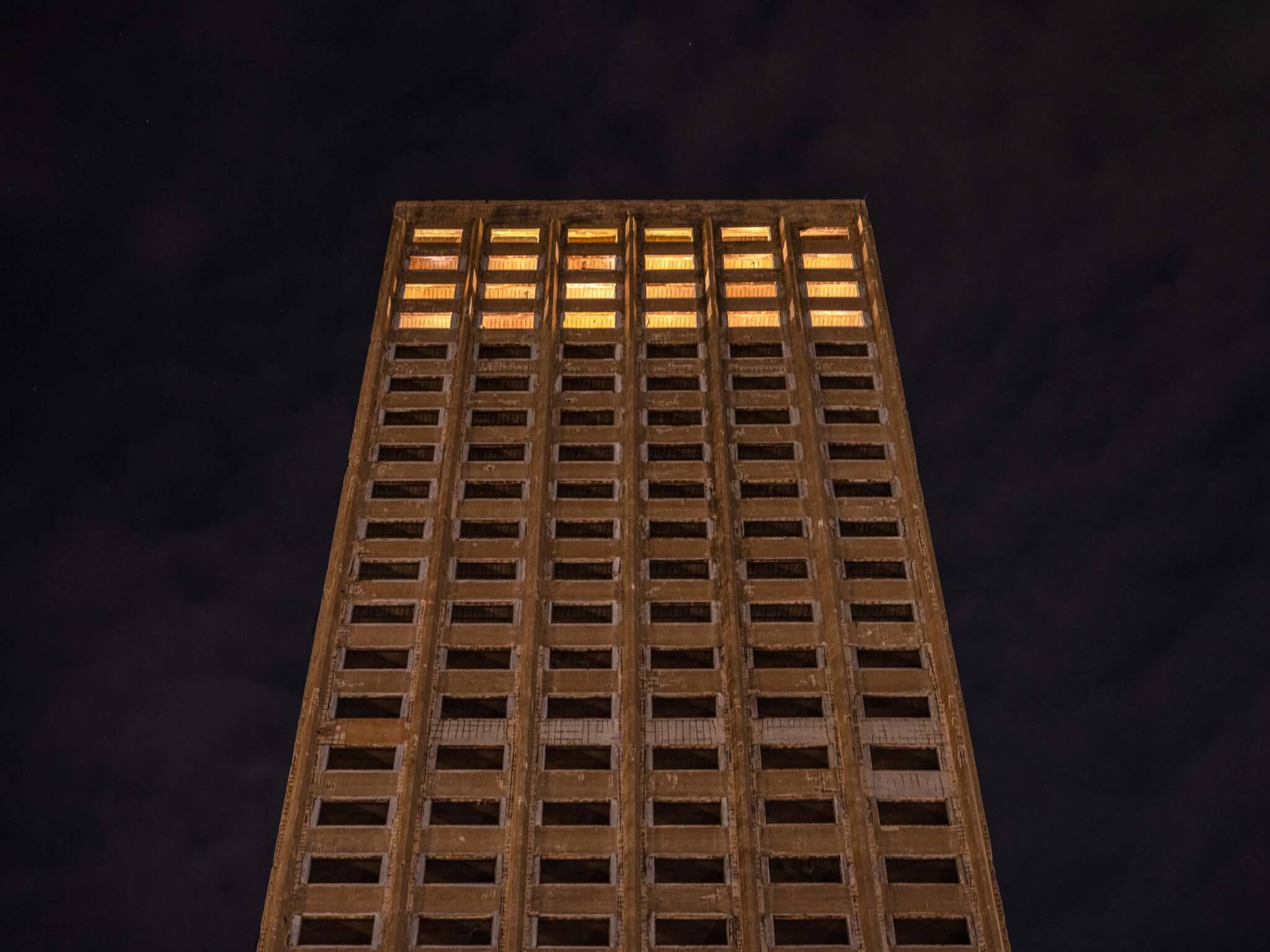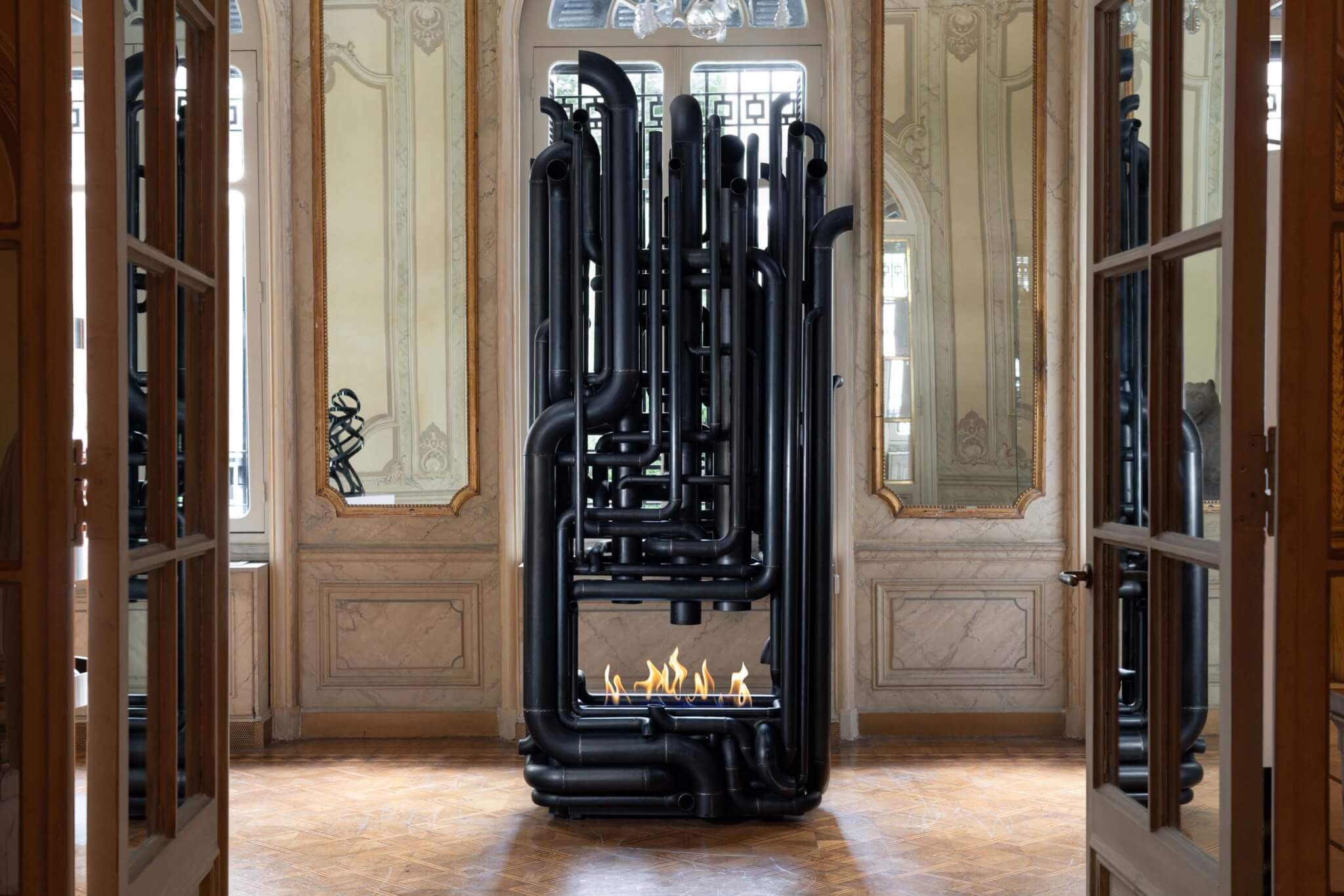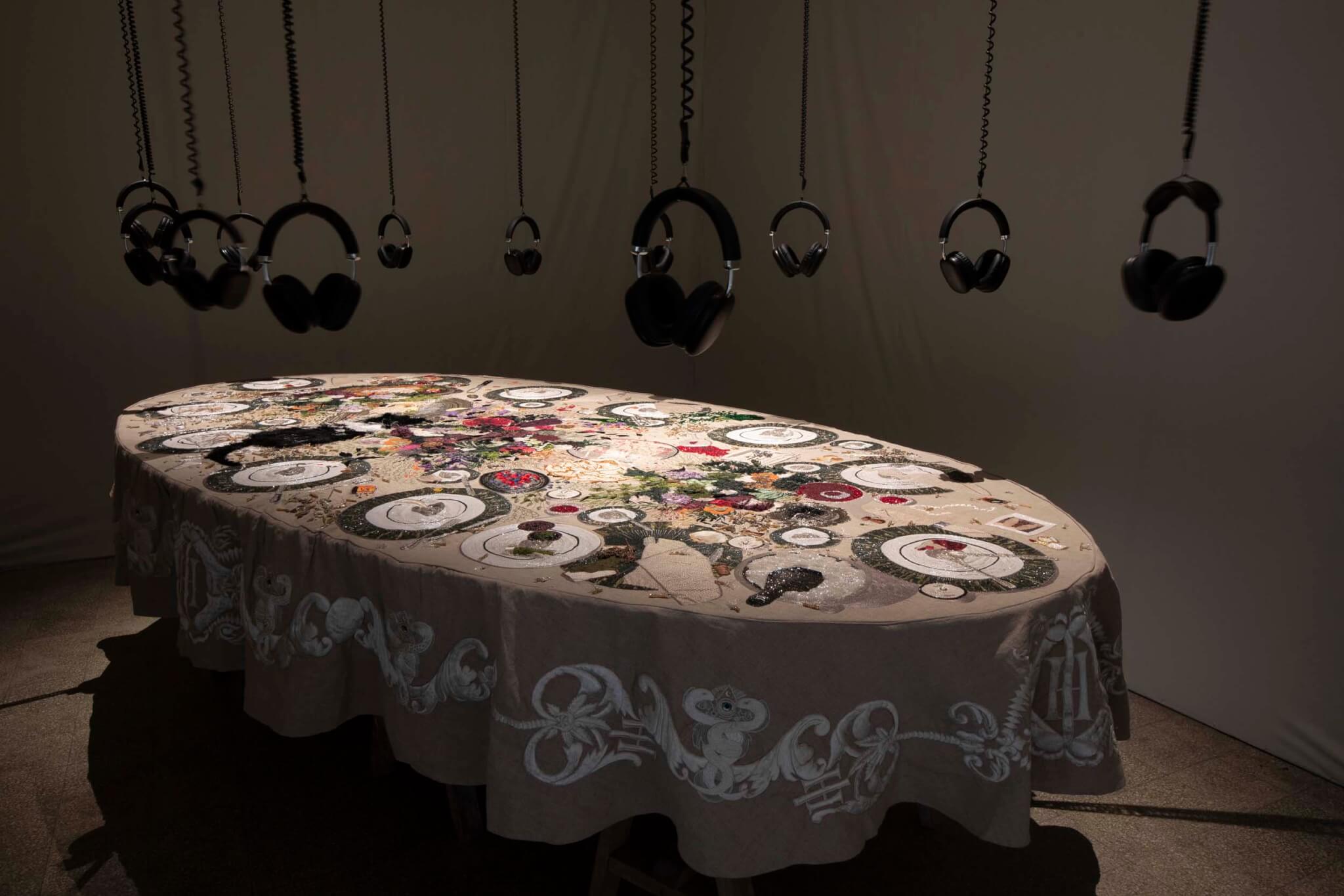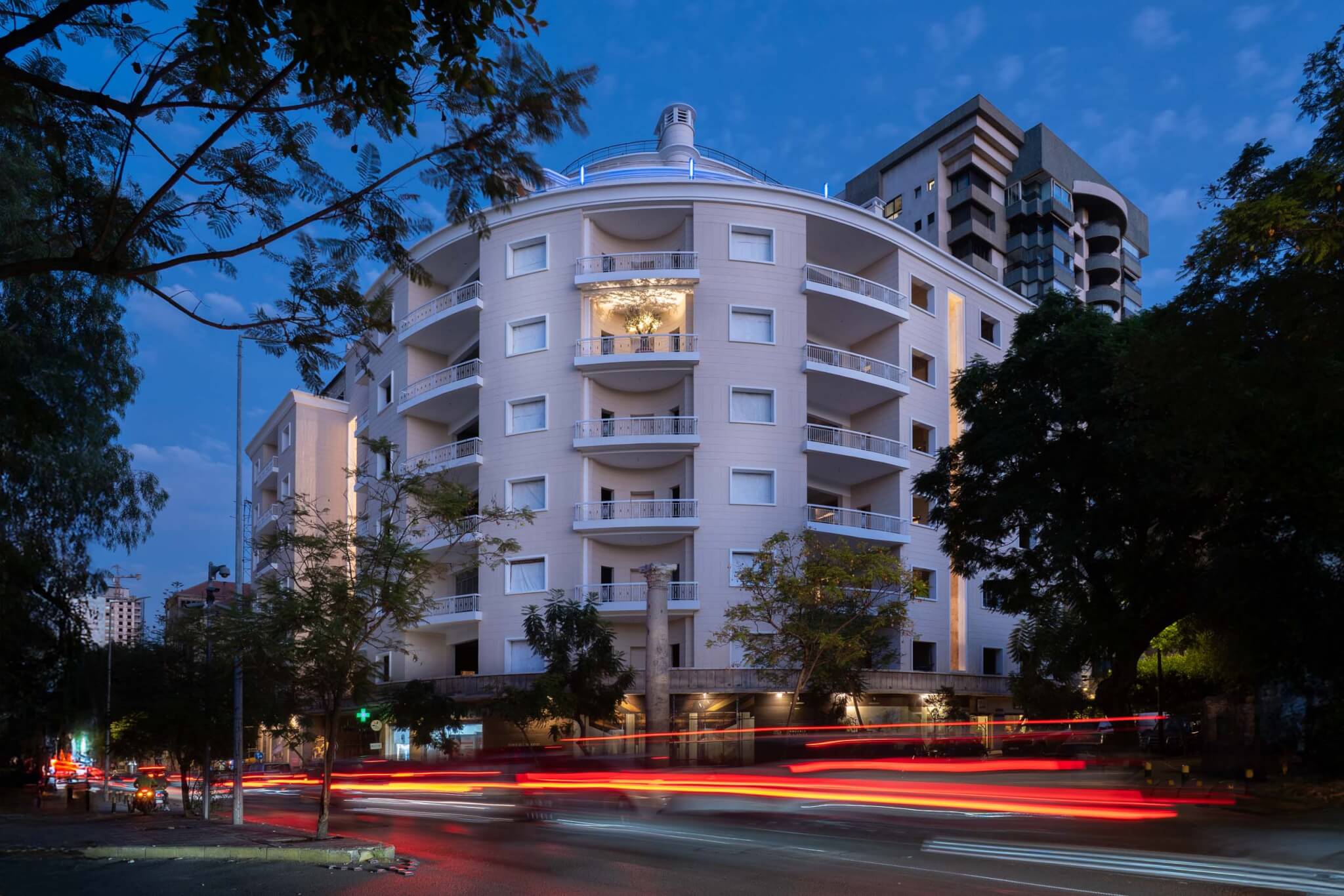This time last year, Lebanon was reeling from a war between Hezbollah and Israel that displaced over one million people and killed more than 4,000. Despite this recent turmoil, organizers of the second edition of We Design Beirut (WDB) managed to put on an event that convened dozens of designers and craftspeople, attracting thousands of visitors.
The five-day event was conceived by Mariana Wehbe after Lebanon’s 2019 financial crisis left Lebanese people locked out of their savings and forced many creatives to leave the country for stability abroad.
“This has to be the norm in Lebanon, We Design Beirut and projects like We Design Beirut cannot be the exception,” said Wehbe on opening night.
This year’s WDB delved into “themes of legacy, revival and continuity” and while it was a showcase for products and ideas, it was also an opportunity to explore Beirut’s hidden landmarks, many of which had been restricted from the public for years.

Chief among them is the 40-story Murr Tower in central Beirut, signature to the city’s skyline for decades, but never opened to the public. Yossef Bassil, a co-curator of the exhibition, said access wasn’t the only challenge, as the building itself was dilapidated and in no shape to welcome visitors. Construction on the tower halted when Lebanon’s 15-year civil war broke out in 1975. The building was then used as a sniper’s nest and traded hands between warring militias before becoming a military base.
Inside, curators made slight alterations and retrofits to safely convert the uncompleted tower into a makeshift exhibit space (security had to be beefed up to prevent people from accessing the top floors). They added a small theater resembling a chapel, to signify the sacredness of the space. The team also decided to stage the fallen debris from the building’s facade as an extension of their exhibit as “archaeology from above, not from below,” as Bassil put it.
In the Shadow of War
For the curators, it was important this edition of WDB drew attention to the recent war. Exhibitions were divided by location and included proposals that focused on Beirut’s southern suburbs as well as a different slate that addressed the southern port city of Tyre—both of which were recently battered by Israel. One architect’s intervention focused on how to revive Tyre’s economy; it proposed solutions for housing displaced people given the lack of management in the aftermath of the war.
Other locations such as Villa Audi, located in the upscale Achrafieh neighborhood, showcased the more commercial side of design. Each room of the mansion hosted artisans, ceramicists, and furniture makers. Curator Gregory Gatserelia wanted designers to “create a totem for today.”

A showstopper was an ethanol-burning fireplace made of black steel pipes, an innovative idea for a country that does not have the electricity to run proper heating. The piece’s designers wanted to tap into a primitive instinct—sitting around a fire—without using any software to produce the design. “It’s an exercise in trying to make something that did not require pre-planning…a need to go back to real manufacturing that doesn’t happen in front of a computer,” said Kamal Aoun, one of the two designers that heads Spock Design. “Primitive is a good way to describe this product because fire is primitive.”
In an adjoining room, Ghyda Kanaan drew inspiration from Beirut’s Roman Era for her hand-carved alabaster liquor cabinet shaped like a Roman column. “It’s an homage to the Roman Empire that existed in Beirut and remembering that it should coexist with modern architecture,” Kanaan said.
Roman Roots
Organizers also pulled from the city’s Roman history, with a showcase of stonework at the Cisterns of the Roman Baths, located in the city’s downtown. Most prominently featured was a green Guatemala marble bathtub by designer and Mashrou Leila band member Carl Gerges. Also on display were benches by JM Design carved from Dover White marble reminiscent of Vladimir Kagan’s Curve Sofa, that has once again become very trendy.
The stone was supplied by Rania Malli who let designers make use of her factory to bring their works to life.
Communing With Craft
A former Abroyan sewing factory on the outskirts of Beirut proved to be the most immersive experience, there visitors got the chance to see artisans perform their craft. Women dressed in traditional garb sat in a circle, singing as their hands steadily worked on moving a needle and thread through white cloth. The performance was organized by fashion designer Salim Azzam.
In another part of the factory, a glass blower sat in front of a furnace heating and shaping glassware as audiences gathered around him. Visitors were also encouraged to make their own art with clay.

One artisan, Hassan Idriss, found a creative way to exhibit his tablecloth, embroidered with plates and platters, vegetables, and a cat. Thanks to a set of headphones and an audio track, visitors could step into the imagined dinner party as guests seated at the table.
A Midcentury Modern Building’s Reprise
Aside from crafts and design objects, WDB programmed tours of one of Beirut’s most well-known, midcentury buildings: the Lucien Cavro– and Antoine Tabet–designed Union Building. Since 2015, Architect Karim Nader has been working on reviving the 1952 building, converting the structure into a mixed-use space with offices on the bottom floors and residential units on the above floors.
The building overlooks a park and the national library. It occupies an entire city block, and could have been knocked down for a tower, but its current owners decided to preserve it. Its renovation comes as the midcentury modern movement is experiencing a huge revival or a “reprise” as Nader said, “an opportunity for a second take.”

For WDB, each floor staged an art installation. On one floor, the Japanese creative unit SPREAD suspended a net across the room, clipping pieces of torn, colorful paper to it to achieve a floating mosaic effect. Visitors also got to see many of the building’s original architectural accoutrements—from the statues draped at the entrance of the building, to the mosaics in the lobby, to the ironwork on the banisters—much of which was preserved.
Despite the recent war and a shaky ceasefire that threatens to collapse, the Lebanese have found ways to continue living undeterred. It is a testament to their resilience, although the Lebanese may not like that word. We Design Beirut had something for everyone and serves as a testament to the country’s growing swell of talent.
Mohamad El Chamaa reports on the Middle East from Beirut, Lebanon. His work has been published by Routledge Press, The Washington Post, and L’Orient-Today.
→ Continue reading at The Architect's Newspaper
